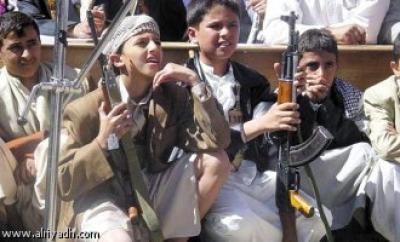Leaders urged to break the silence around the issue as report reveals every year 1.7 billion children across rich and poor countries experience abuse
The Guardian
Rebecca Ratcliffe
26 September, 2017
Nearly three out of four children experience violence each year, according to a global study that warns practices such as corporal punishment are widespread in both rich and poor countries.
Around 1.7 billion children experience some form of abuse over the course of a year, according to the report by the global initiative Know Violence in Childhood, which measured the prevalence of inter-personal violence such as fighting at school, bullying or sexual abuse.
The biggest cause of such violence was corporal punishment at home, which affected 58% of children in industrialised countries and more than eight in 10 children across eastern and southern Africa, south Asia and western and central Africa.
AK Shiva Kumar, global co-chair of Know Violence in Childhood, which is made up of 100 leading researchers and experts, and supported by organisations such as Unicef, said such abuse is entirely preventable.
“Political leaders must help us implement what we already know works and break the silence around this critical issue.”
Ramya Subrahmanian, the organisation’s executive director, said the use of violence to discipline children “extends around the world”. Families in Mozambique, Burundi and Ghana were most likely to use corporal punishment, which included psychological aggression or physical punishments. Cuba, where 36% of children experienced violent discipline, had the lowest rates of corporal punishment, followed by
Turkmenistan, Serbia, Panama and Costa Rica.
The study did not examine children’s experience of violence specifically as a result of conflict or crimes such as slavery and trafficking, but instead focused on physical, sexual and emotional violence that affects children around the world.
Alongside corporal punishment, the report found 261 million schoolchildren experienced peer violence, including more than half of boys aged between nine and 10. For girls, assaults from other students begin around age six, while a third suffer violence between the ages of nine and 11.
The study is based on existing UN data, collected in 2015, which surveys children’s experiences of violence over the past year. A major challenge, the report authors warn, is the lack of information collected by many governments. Where data isn’t available, proxy measures are used by the report, which is the culmination of a three-year-long project that attempts to give a comprehensive picture of the violence encountered by children around the world.
While country-level statistics may be affected by under-reporting or a lack of monitoring, the authors say the report is intended to encourage governments to take action. “Given the sustainable development goals [which include a commitment to end all forms of violence against children by 2030] and the heightened interest in these issues, we felt we needed to have country-level global data,” said Subrahmanian.
According to the study, 18 million adolescent girls aged 15–19 experienced sexual abuse at some point during their lives. Levels of sexual violence were highest in Cameroon and the Democratic Republic of the Congo, where one in every five adolescent girls were affected. Germany, Kyrgyzstan and France had the lowest levels of sexual violence for adolescent girls.
She questions whether women get the social support they need to deal with the stresses of raising children in resource-scarce environments, adding that investing in social services will save money in the long term. The annual financial cost of physical, sexual and psychological violence against children is estimated to be between 2%-5% of global GDP, or about $7tn (£5.2tn).
 Lebanese Ministry of Information
Lebanese Ministry of Information



